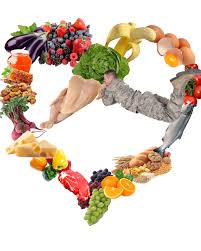If your body has high cholesterol, you are at risk of heart disease. But there’s good news. It is a risk that can be controlled. You can increase your good HDL cholesterol and lower your bad LDL cholesterol by making a few simple changes.
You may still need to take medicine to bring your cholesterol level back, but if you make just a few changes, you might be able to lower your risk of heart diseases and the side effects will also be very low. Follow the below-mentioned tips to reduce your cholesterol.
- Reduce trans fats: These fats increase your LDL and lower your HDL, thus increasing the risk of heart stroke and heart diseases. However, it is difficult to avoid them. They are found in baked food like frozen pizza, cakes, cookies, fried food items, and margarine. How can you avoid these items? While you shop, read the labels carefully. But, be cautious when you see “partially hydrogenated oil” on the pack. This is just another name for trans-fat.
- Reduce weight: You don’t have to reduce a lot of weight for lowering your cholesterol levels. If you are overweight, just drop 10 pounds and you will reduce your LDL by nearly 8%. But to really maintain the pounds, you will have to do it with time. A reasonable and safe objective is 1 to 2 pounds a week. Studies show that when inactive, overweight women generally need around 1,000 to 2,000 calories regularly for weight loss. On the contrary, active, overweight females who weight over 164 pounds generally need 1,200 to 1,600 calories every day. If you are very much active during your weight-loss program, you may need extra calories for avoiding hunger pangs.

- Get moving: Exercising for at least 2 ½ hours in a week is more than enough to increase HDL and enhance triglycerides and LDL. If you have not been active for a long time then, you must start slowly. Even walking for 10 minutes daily can do wonders. Choose a workout that you enjoy. Exercising with a partner can help you to be on track.
- Intake more fibre: Foods like apples, oatmeal, beans, and prunes are high in soluble fibre, which keeps your body away from absorbing cholesterol. Research shows that individuals who are 5 to 10 grams of it saw a fall in their LDL. Also, eating more fibre will make you feel full, so you won’t need any extra snacks to munch. But be careful. Intake of too much fibre at one time can cause bloating or abdominal pain. Increase your quantity slowly.
- Use olive oil: Substituting olive oil for butter can reduce LDL cholesterol by 15%. The good fats present in olive is beneficial for your heart. It’s always good to use extra-virgin olive oil. This oil is less processed and consists of more antioxidants, which helps in preventing diseases.

- Have nuts: Most of the nuts can help to reduce LDL. The reason behind this? They contain sterols, which, just like fibre, keeps the body from absorbing cholesterol. Nuts are high in calories.
- Be cool: Do you know that when you are stressed, your cholesterol can rise? So, relax. Meet an old friend of yours, read a good book or practice yoga. These activities will keep stress away and control your cholesterol levels.
- Quit Smoking: Smoking can increase LDL and reduce HDL, and often quitting improves the numbers. Studies have shown that people who stopped smoking experienced an increase in good cholesterol in them by 5% in a year. However, at the same time, you should avoid inhaling smoke as it too can increase the cholesterol level.

